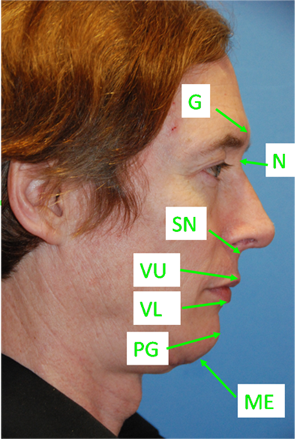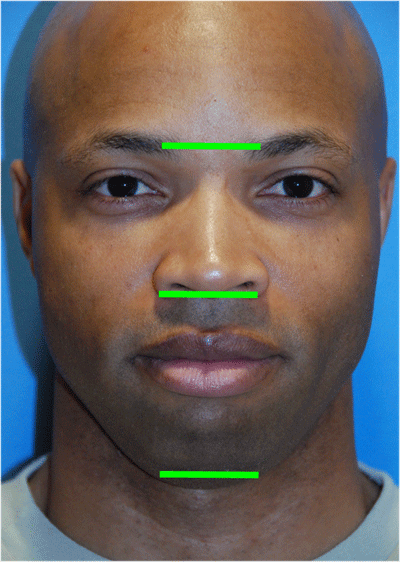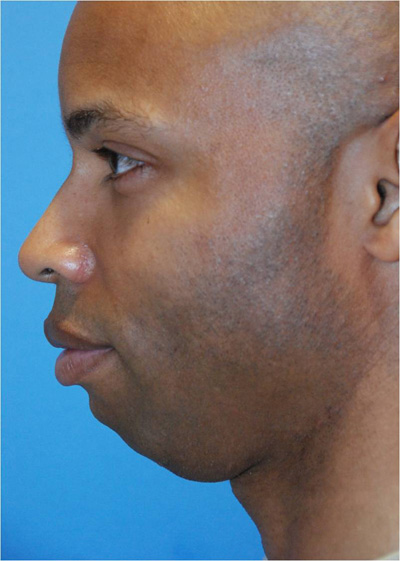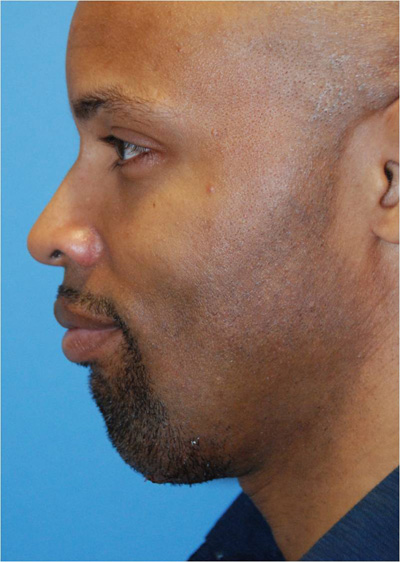So a common question is would I benefit from a chin augmentation (Dr Philip Young Seattle/ Bellevue Wa)? I addressed this question in a recent blog but I didn’t talk about the vertical component. How much vertical augmentation do I need and do I even need to add anything to the vertical dimension of my chin? Firstly, it is good to have some anatomical terms to refer to. In the first picture, the Glabella, labelled “G” is the most projecting point on the lower parto f the forehead and is usually right between the eyebrows. The nasion, labeled “N”, is the most depressed point below G and is usually at the root of the nose. The Subnasale, labeled “SN”, is the point of transition from the nose to the upper lip. It is where the nose, columnella, intersects the upper lip. The upper vermillion is the point of transition from the white part of the upper lip to the red portion of the lip (Called the Vermillion) and is labeled “VU”. The same point coinciding with the lower lip is labeled “VL”. The Pogonion, labeled “PG”, is the point of the chin that is the most projecting anteriorly. The mentum, labeled “MN”, is the most inferior portion of the chin. One thing to be careful of is when the patient has a double chin. The mentum is the part of the chin that is associated with the chin and not the inferior part of the sagging that can occur under the chin and posterior to the chin. The first rule for vertical augmentation is based on three lines drawn through the glabella, subnasale, and mentum. Each of these distances created by these lines should be equal. If your chin is making the distance from the mentum to the subnasale shorter than the distance from the subnasale to the glabella, you could benefit from a vertical chin augmentation. If it is longer than you could benefit from chin reduction. This is shown in the second picture. Now, if you draw a line through the nasion instead of the glabella the distance from nasion to the subnasale should be 43% and the distance from the subnasale to the mentum should be 57% o the total distance from nasion to mentum. If the your distance from subnasale to the mentum is less than 57% you could possibly use some vertical enhancement. the In the third picture, three lines are drawn through the subnasale, stomiom (or the opening between the upper and lower lips), and the mentum. The ratio of the distance from subnasale to the stomiom to the distance from stomiom to the mentum should be 1:2. If the distance from your stomiom to the mentum is less than this ratio, you could benefit from vertical enhancement or an increase of the vertical dimension of your chin. Below are some results of chin augmentation for you to see how a chin implant could enhance your appearance.
Thanks for reading, Dr Young
Dr Young specializes in Facial Plastic and Reconstructive Surgery and is located in Bellevue near Seattle, Washington






